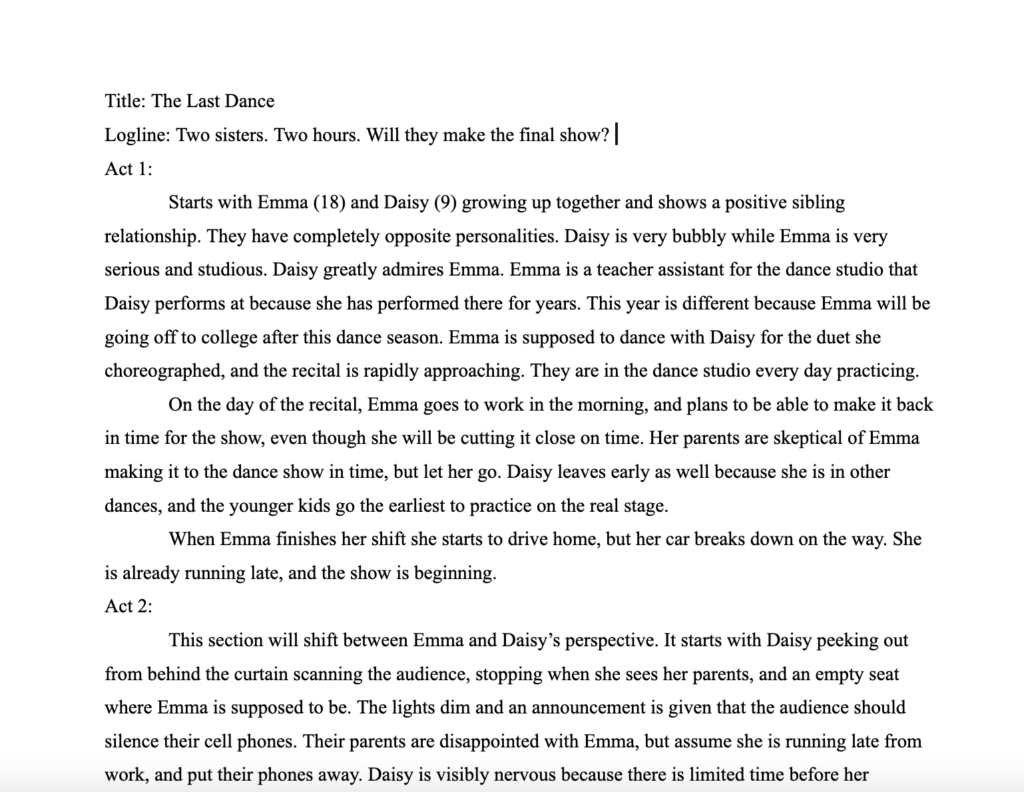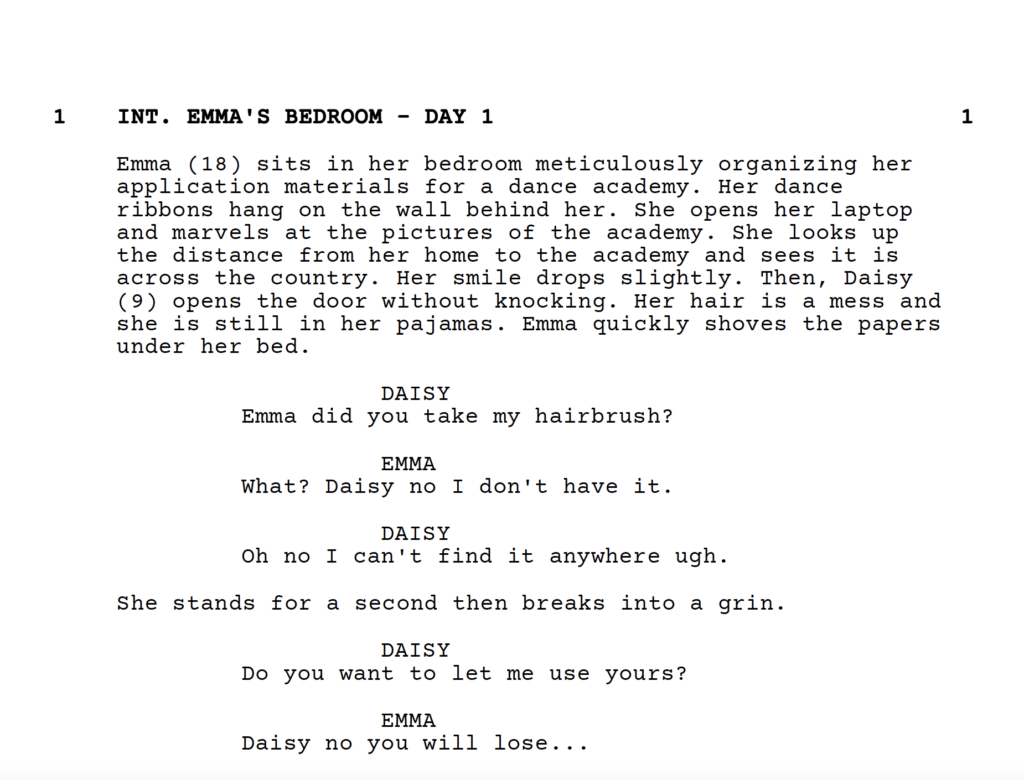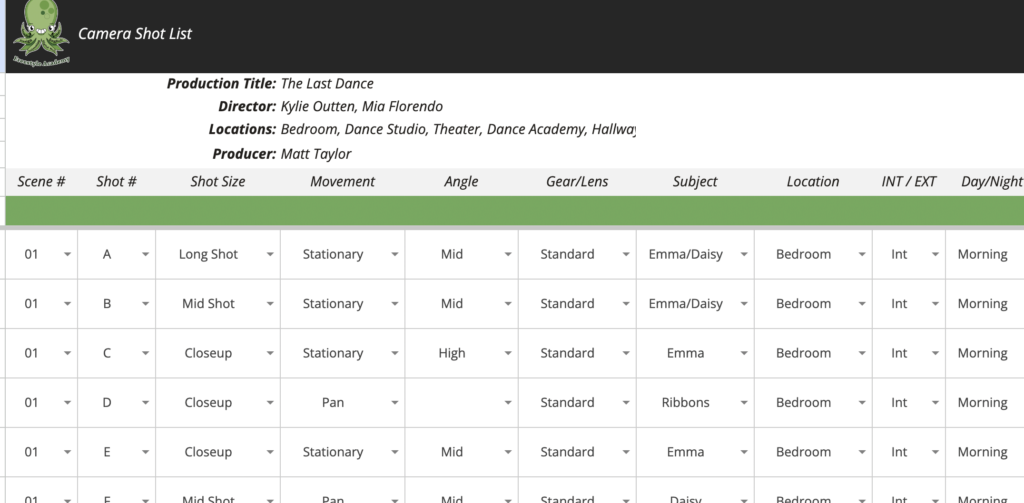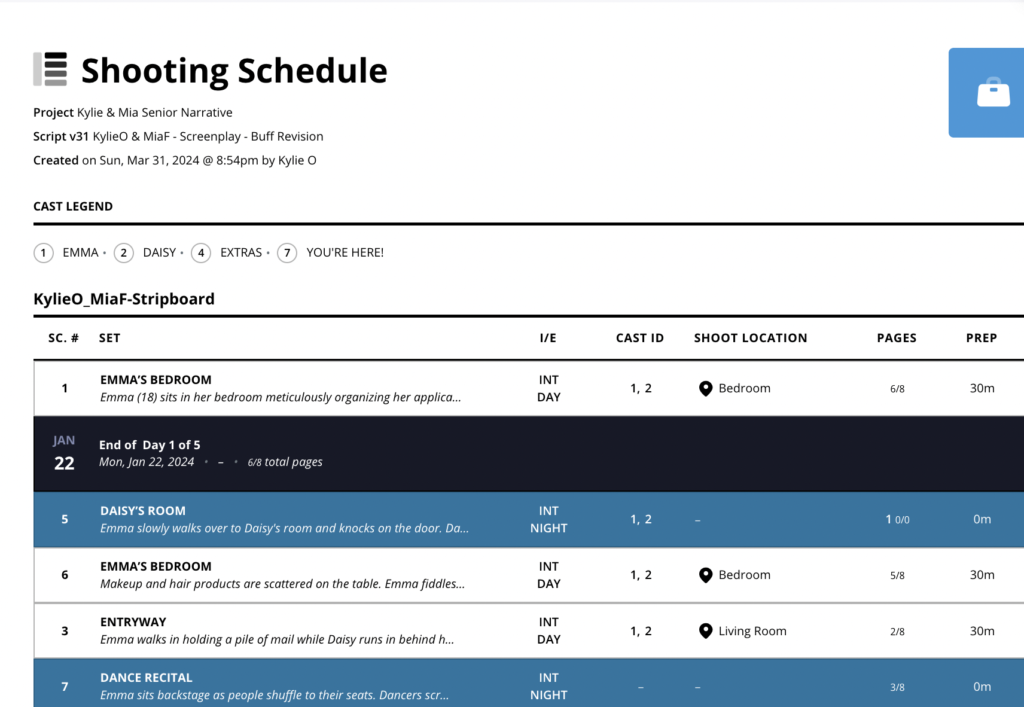Narrative Visual Perspective in Film
In Film, we completed a narrative project spanning six months. We learned through the pre-production, production, and post-production phases. We pitched our ideas, wrote screenplays, participated in table reads, elevated camera work through weeks of shooting, and finally edited. This was the longest and most difficult project at Freestyle.
My film’s logline is: Two sisters. Growing distance. Will they make the final show?
My final film diverted slightly from my synopsis but the important components remain the same. My film is a heartwarming story about an older sister moving across the country to dance for a professional academy and has to leave her younger sister behind.
The younger sister must come to terms with this change but is reluctant and angry that her sister is leaving.
The older sisters final show is around the corner and the question is whether or not the younger sister will go to her her sisters final show at home.
(Dialogue scene not yet uploaded to YouTube)
My screenplay was a long process that took many rounds of editing to complete.
The process was enjoyable though and I am happy with the final product.
My film partner and I collaborated to create a storyline that would be rewarding to the audience
as well as exciting.
I hope you enjoy reading!
We had a variety of shots for each scene to follow Griffith’s pattern.
We included wide shots, medium shots, close-ups, and more movement shots like pans and over-the-shoulder shots to add some variety to our film.
This was a time consuming process, but made the production process much easier.
We stuck to this shotlist as much as possible.
This is the shooting schedule.
We spent five days shooting at different locations that made the most sense to make the scenes realistic but also places that would be easy to gain access to, that had good lighting etc.
Scheduling was a difficult process because we had to manage actors at different schools and shoot at different times of day to make the story have proper continuity.
The planning ahead of time made shooting days less stressful.
We also combined days with the same locations to save us trips.
We also created narrative breakdowns to organize out locations and page breakdowns. We aimed to film around two pages a day.
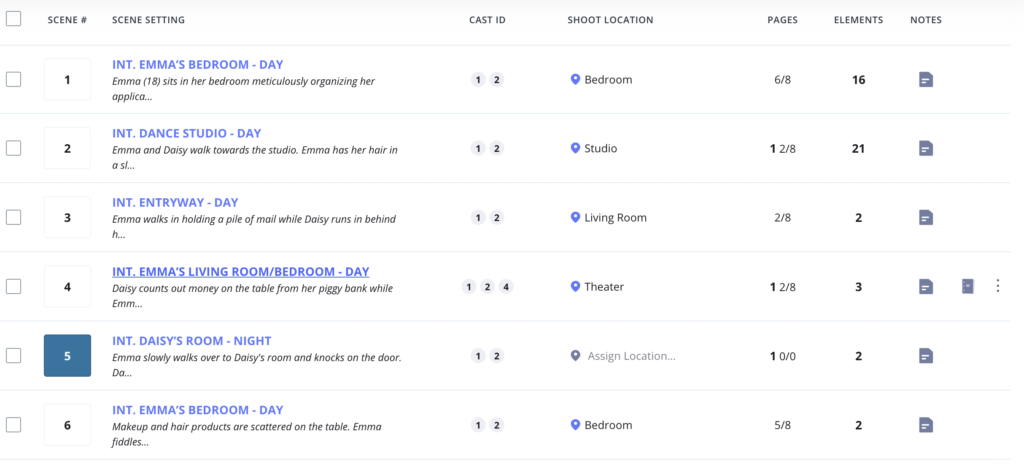
We also created Stripboards to make sure we had all the props, set dressings, and costumes needed for the day. This is an example of a scene breakdown.
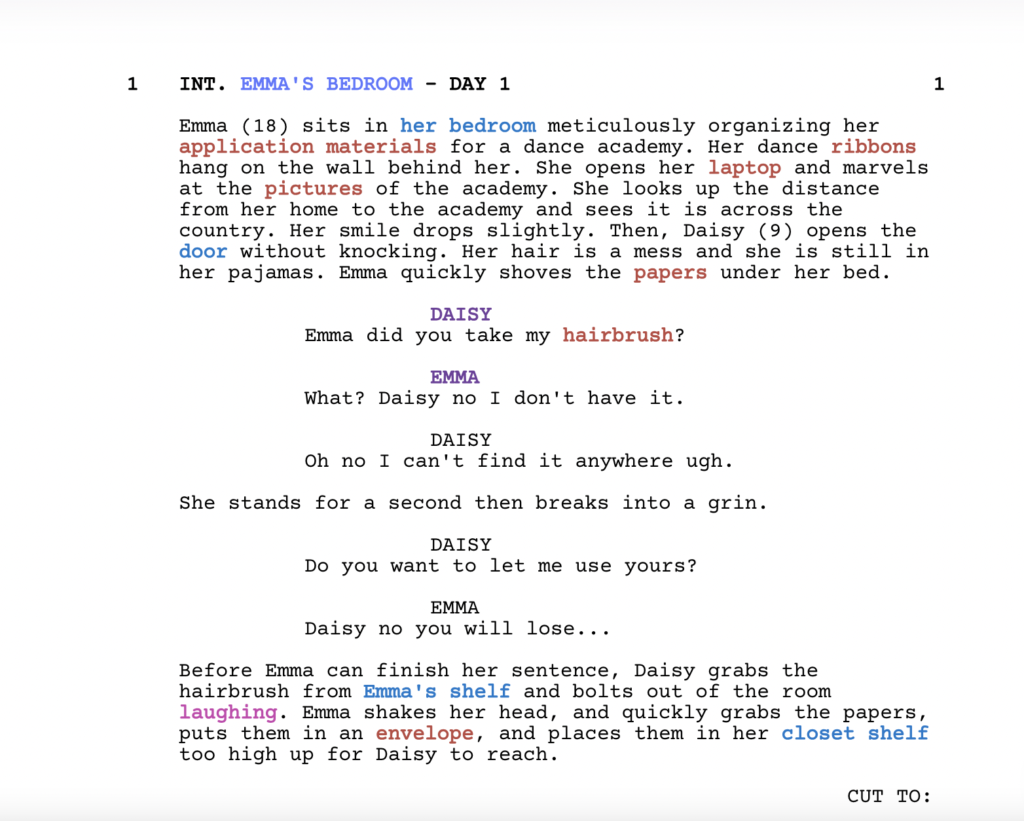
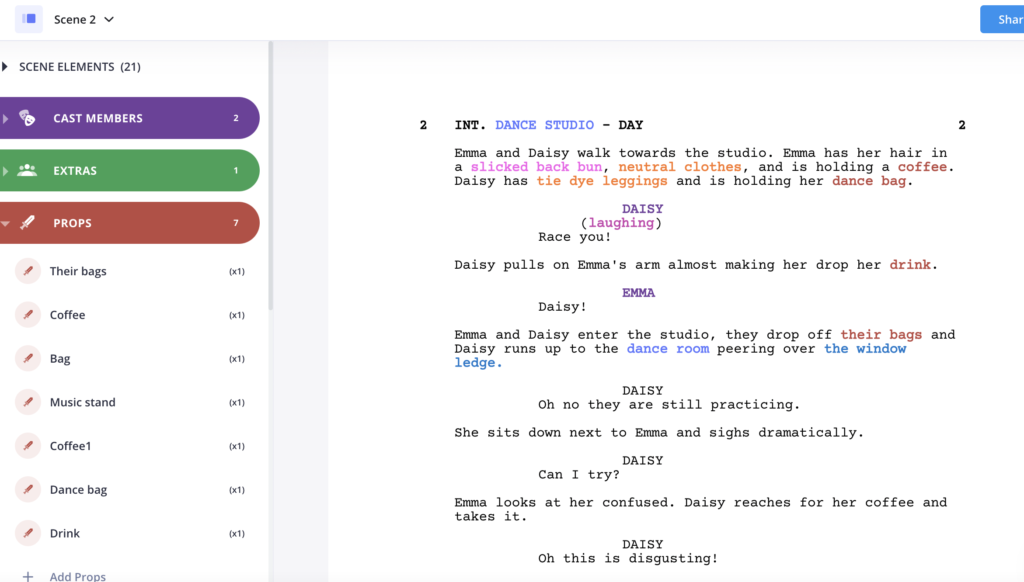
Acting
Acting was an important part of the narrative film process. We had some incredible actors who were great to work with. They picked up lines quickly and naturally worked well together.
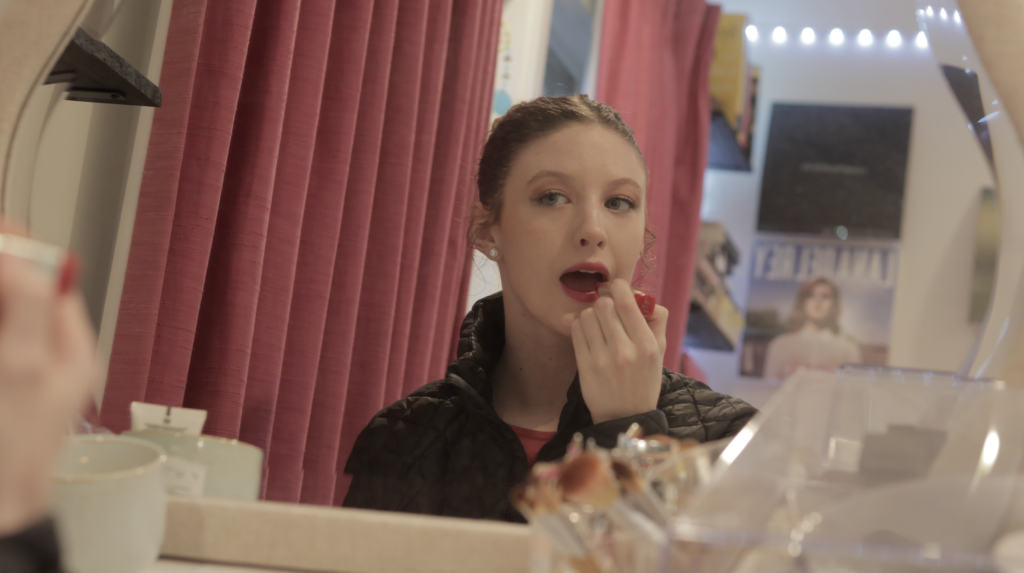
Narrative film is not yet posted on YouTube.
Reflection
Making my narrative film grew my skills in writing, camera work, and editing. I value being able to see my vision come to life and working with some amazing people who made this film possible.
